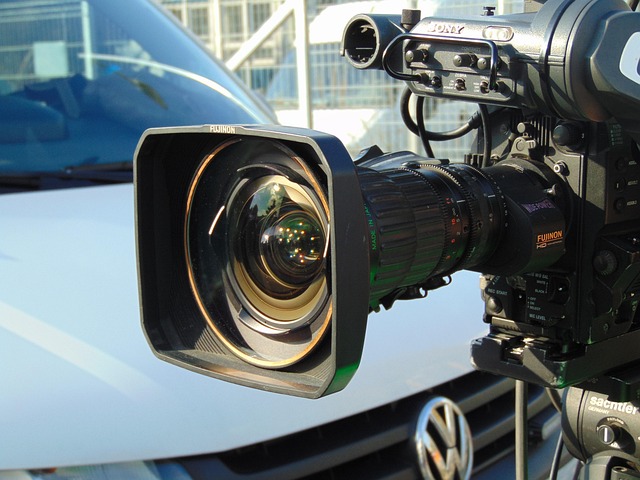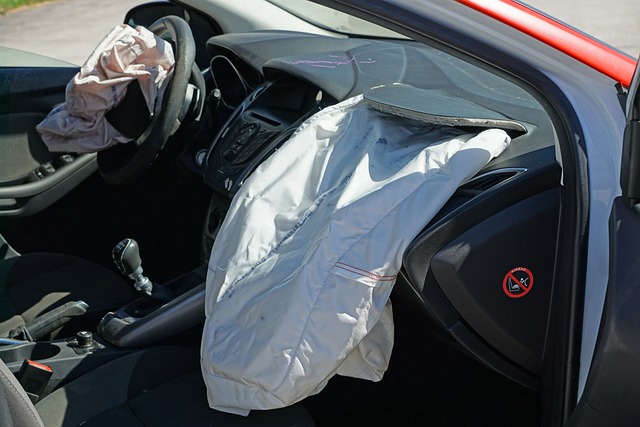Collision coverage is a vital component of automobile insurance, offering financial protection against vehicle damages caused by accidents. It covers repairs and medical expenses but excludes intentional damage, normal wear & tear, and natural disasters. Understanding policy details, including deductibles, is crucial. High-quality collision coverage provides peace of mind, assists with repairs & bills, and reduces legal complexities. Selecting a reputable insurer with efficient claim management ensures seamless post-accident experiences. Advanced technology enhances repair quality and safety. Real-life stories highlight collision coverage's advantages, emphasizing its importance for vehicle owners. Effective communication and meticulous record-keeping during claims processes ensure smooth recoveries.
Looking to safeguard your vehicle and budget after a collision? High-quality collision coverage is essential, offering peace of mind and ensuring thorough repairs. This comprehensive guide delves into the intricacies of collision insurance, covering what it does and doesn’t protect. From common scenarios where superior coverage shines to decoding policy fine print and choosing the right provider, we explore tips for a seamless claim process. Discover how technology enhances repair quality through real-life customer stories, and learn simple steps to navigate post-collision repairs efficiently.
Understanding Collision Coverage: What It Covers and What It Doesn't

Collision coverage, a key component in automobile insurance policies, offers financial protection against unexpected vehicle damages resulting from accidents. It’s designed to help repair or replace your car if it collides with another vehicle or static object. However, collision coverage isn’t all-encompassing; it excludes situations like intentional damage, normal wear and tear, or losses due to natural disasters.
Understanding what collision coverage does—and doesn’t—include is vital for informed decision-making when choosing an insurance plan. It typically covers repairs or replacements of your vehicle’s damaged parts, as well as medical expenses for injuries sustained by you and your passengers during a collision. But it’s crucial to remember that deductibles apply, meaning policyholders often need to pay a predetermined amount out of pocket before insurance kicks in.
Why High-Quality Collision Coverage is Essential for Your Peace of Mind

High-quality collision coverage is an absolute necessity for any vehicle owner, offering unparalleled peace of mind on the road. In today’s world, where accidents can happen at any moment, having robust insurance protection ensures that you’re not left burdened with unexpected financial strains and legal complications. Collision coverage acts as a shield, safeguarding your finances against the often-profound costs associated with repairs or, in severe cases, replacement of your vehicle.
This type of coverage is essential for maintaining stability during uncertain times. It provides the assurance that if you’re involved in a collision, whether through no fault of your own or due to another driver’s negligence, your insurance will help cover the damages. This means less stress and more time to focus on recovery, knowing that your vehicle and financial security are in good hands.
Common Scenarios Where Quality Collision Coverage Makes a Difference

In today’s world, where accidents are an unfortunate reality, having high-quality collision coverage can be a lifeline. It’s not just about minimizing financial loss; it’s about ensuring peace of mind knowing that you and your loved ones are protected in the event of a collision. Whether it’s a fender bender on a busy city street or a head-on crash in rural areas, quality collision coverage can help with repairs, medical bills, and even lost wages if you’re unable to work following an accident.
Common scenarios where this coverage truly makes a difference include incidents involving significant property damage, personal injuries, or when multiple parties are involved. In these situations, legal complexities and financial burdens can be overwhelming. Quality collision coverage steps in to help navigate these challenges, ensuring that individuals focus on recovery rather than paperwork and costs. It’s an investment in security and stability during unpredictable times.
Decoding the Fine Print: Key Exclusions and Limitations to Watch Out For

When exploring high-quality collision coverage, understanding the fine print is crucial. Insurance policies often include a list of exclusions and limitations that can significantly impact your claims process and financial burden in the event of an accident. Key things to watch out for include excluded vehicle types, specific weather conditions that aren’t covered, and scenarios where your policy doesn’t apply. For instance, some policies might not cover collisions occurring while driving on unpaved roads or during certain high-risk activities.
Moreover, be mindful of limitations on repair facilities and the type of parts used. Some insurance providers allow only authorized repairs or limit coverage to specific replacement parts, which could affect both the cost and quality of your vehicle’s restoration after a collision. Deciphering these details beforehand ensures you’re fully aware of what’s covered and what’s not, giving you peace of mind on the road.
How to Choose the Right Insurance Provider for Top-Notch Collision Services

When seeking high-quality collision coverage, selecting the ideal insurance provider is a strategic move. It’s crucial to research and compare different companies to find one that specialises in collision services. Look for providers with a proven track record of handling collision repairs efficiently and effectively. Check their reviews, ratings, and customer feedback to gauge their performance and reliability.
Consider factors like the network of repair shops they collaborate with, ensuring access to reputable facilities across various locations. Additionally, inquire about their processes for managing claims, including turnaround times and communication during the repair process. A good insurance provider should offer seamless coordination between policyholders, repair shops, and adjusters, making the experience as stress-free as possible during what can be a challenging time.
The Role of Technology in Enhancing Post-Collision Repair Quality

In today’s digital era, technology plays a pivotal role in enhancing the quality of post-collision repair. Advanced tools like computer-aided design (CAD) software and 3D printing enable precise measurements and accurate restoration of vehicle components to their original specifications. These innovations ensure that every part is perfectly aligned and fitted, maintaining the structural integrity and aesthetic appeal of the vehicle.
Moreover, technology facilitates better material management and efficient repair processes. Smart sensors and predictive analytics can detect damage patterns, enabling technicians to make informed decisions about replacement parts and repair methods. This not only reduces waste but also guarantees that the collision coverage is comprehensive and effective, ultimately delivering higher-quality repairs for a safer driving experience.
Customer Stories: Real-Life Experiences with Superior Collision Coverage

In today’s digital era, where safety and peace of mind are paramount, collision coverage has emerged as a game-changer for many vehicle owners. Real-life experiences shared by satisfied customers highlight the immense value of high-quality collision coverage. Take, for instance, Sarah, who found herself in a fender bender on her way to work. Thanks to her comprehensive collision insurance, her car was swiftly repaired without breaking the bank, ensuring she stayed connected and productive throughout the process.
Similarly, David, an avid traveler, had his vehicle involved in a minor accident during a road trip. His superior collision coverage not only covered the repairs but also provided him with rental car assistance, allowing him to continue his journey without delay. These customer stories underscore how meaningful collision coverage can be, offering not just financial protection but also convenience and peace of mind in unexpected situations.
Tips for Making Claims and Ensuring Efficient Collision Repair Process

When making a collision coverage claim, clear communication is key. Immediately after an accident, document the scene with photos, exchange insurance information with the other driver, and notify your insurer as soon as possible. Provide them with accurate details about the incident, including dates, times, locations, and any witnesses present. This swift action ensures a smoother process for everyone involved.
During the collision repair phase, choose an accredited repair shop to ensure quality work. Verify that they have experience handling your vehicle’s make and model, and ask for references if needed. Stay informed about the repairs by regularly communicating with your insurance company and the shop. Keep track of all estimates, invoices, and correspondence to ensure transparency and avoid any surprises when it comes to reimbursement or additional costs.
